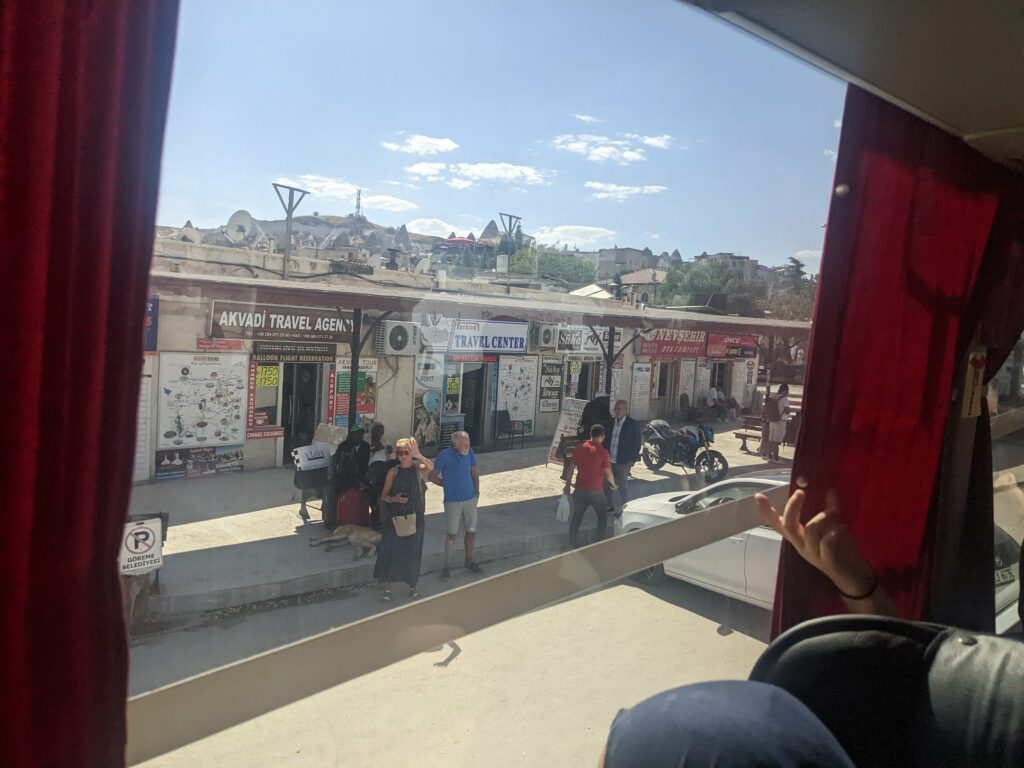Cappadocia’s bizarre landscape formed as a result of volcanic eruptions and millions of years of weathering. The result is a sea of fairy chimneys, mountains, and canyons. While our hot air balloon ride gave us an aerial view of Cappadocia’s rock formations, we also wanted to see them close up. We took a road trip to explore some of the churches that had been built into the rock further afield, as well as spending a day navigating the Rose Valley on foot.

On our first day in Göreme, we set off for a road trip with Mick & Helen through a few of the villages south of the town. First up was a visit to an abandoned church attached to a rocky cliff in the extremely quiet town of Cemil.
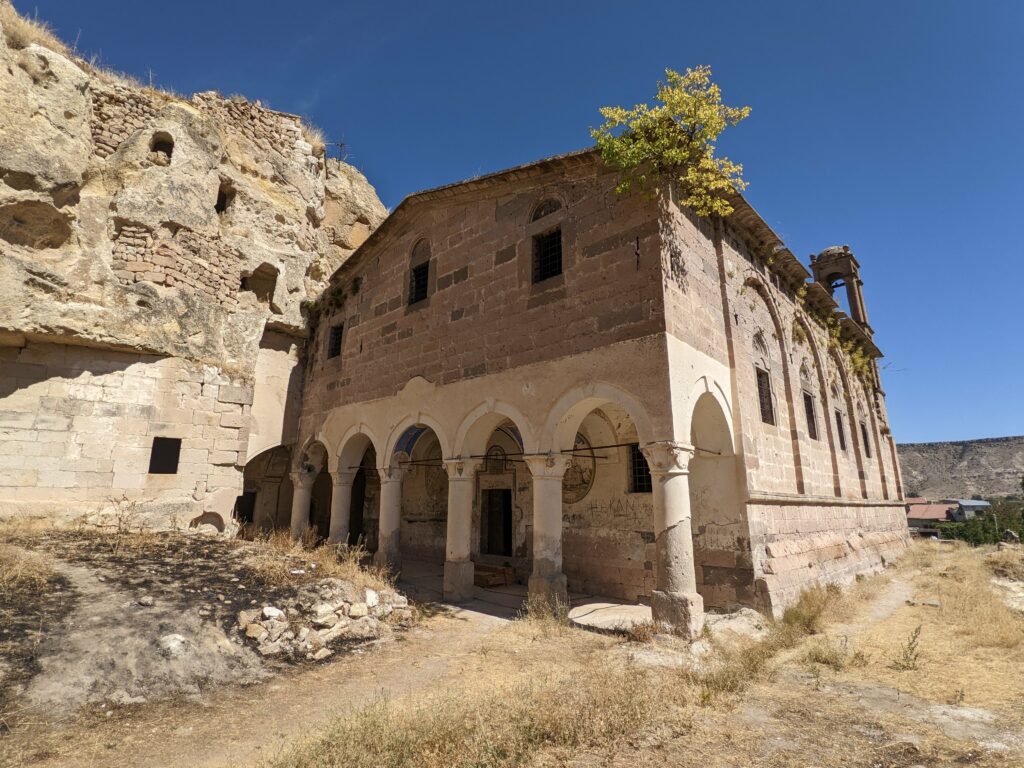
I’m not sure what I was expecting to find inside, but I wasn’t expecting this.
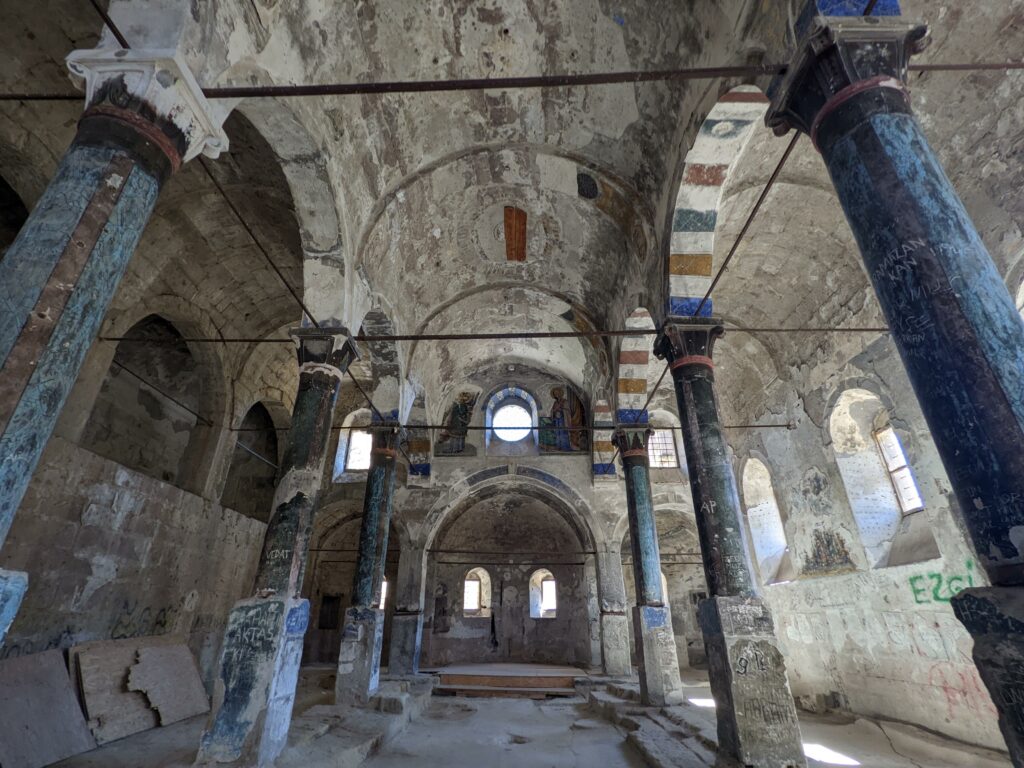
The church was an eerie blend of vibrantly colourful columns, vandalised frescos, and modern graffiti. Slightly unsettlingly, the faces had been scratched from many of the frescos that adorned the walls. This place sent chills down my spine.
We continued on to a monastery complex just outside the village of Keşlik, containing two more churches, a wine cellar, a house and a monks’ refectory, carved entirely from caves. We were met by the site’s guardian, who listed the use of each cave in the monastery complex, and repeatedly insisted that a “complete visit is possible.”
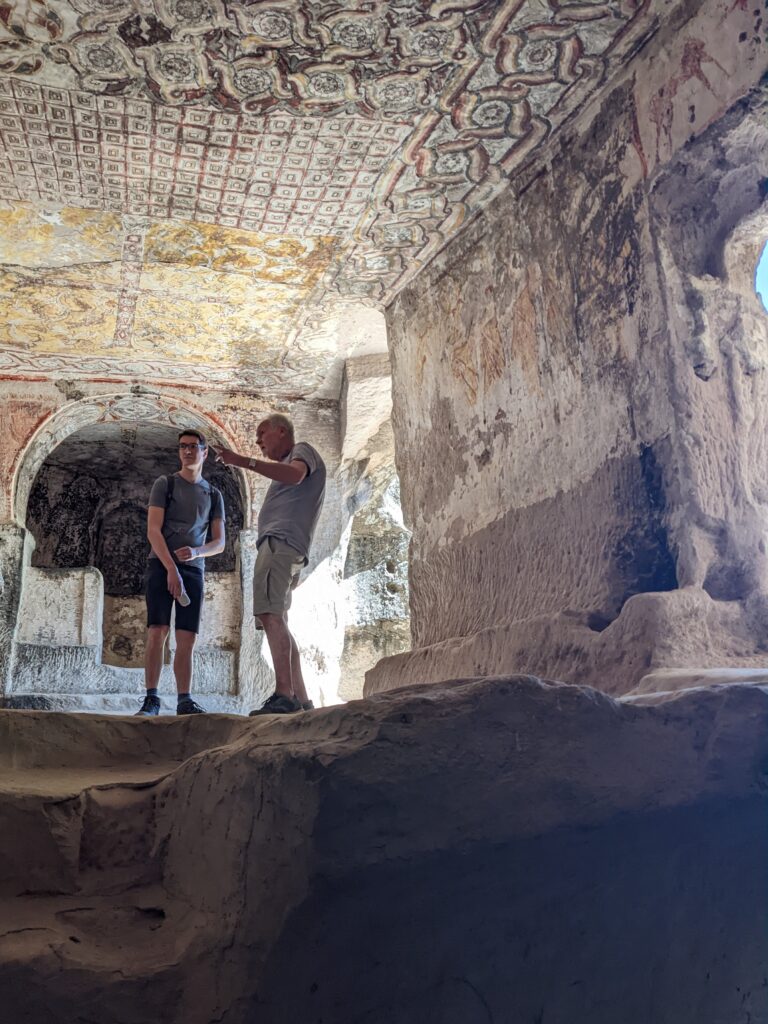
Dutifully, we entered the first cave and were met with a dazzling array of colourful 9th-century frescos. In contrast, the 13th century cave-church appeared to have its ceiling painted black. That was until our guardian friend emerged out of the darkness with a torch, and helpfully pointed out Jesus and his disciples depicted in various biblical scenes across a number of faded frescos. These were all but invisible until he highlighted them with the beam of his torch.
As we continued to explore the monastery complex, we came across what looked like a giant millstone standing just inside the entrance to one of the cave rooms. Once again, the guardian popped up to demonstrate that it could be rolled across the room’s doorway sealing it against any intruders, therefore allowing the monks to make their escape down a tiny tunnel at the back of the cave. This level of foresight and preparation gave us a bit of insight into the fear of persecution under which these monks lived.
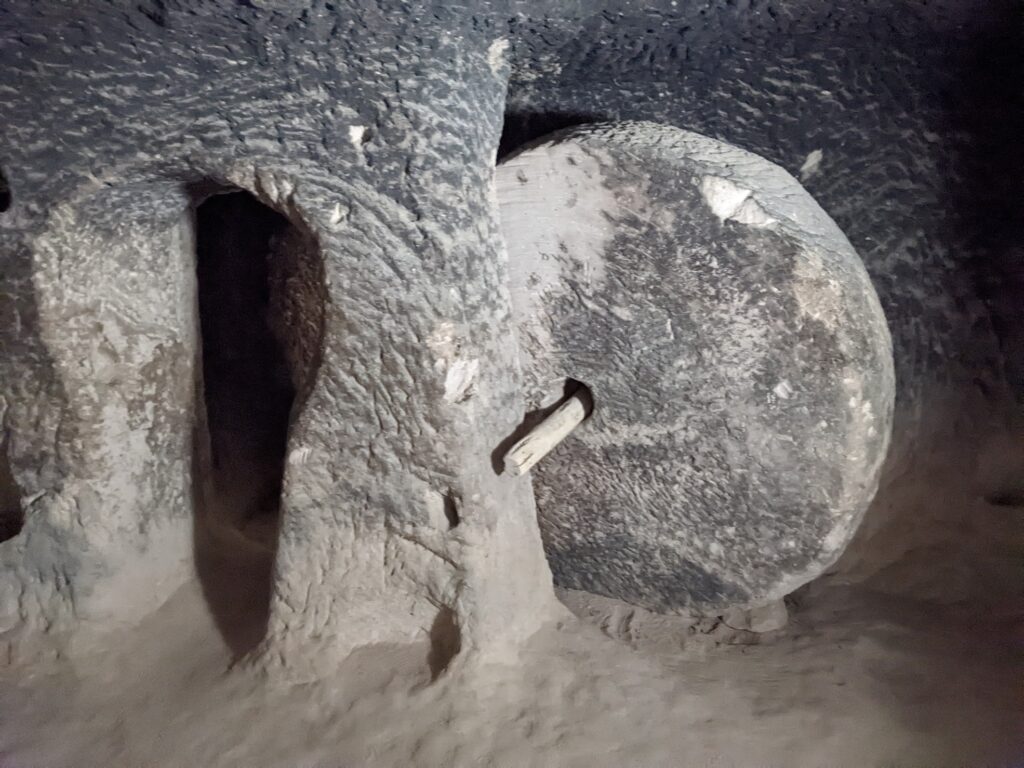
All this exploration was hungry work, so we drove on to the village of Soğanlı and came across this beautiful family-run restaurant in an apricot orchard. As per usual, we ordered a colossal amount of food (not pictured), and spent most of the mealtime trying to palm off our plates on to each other.
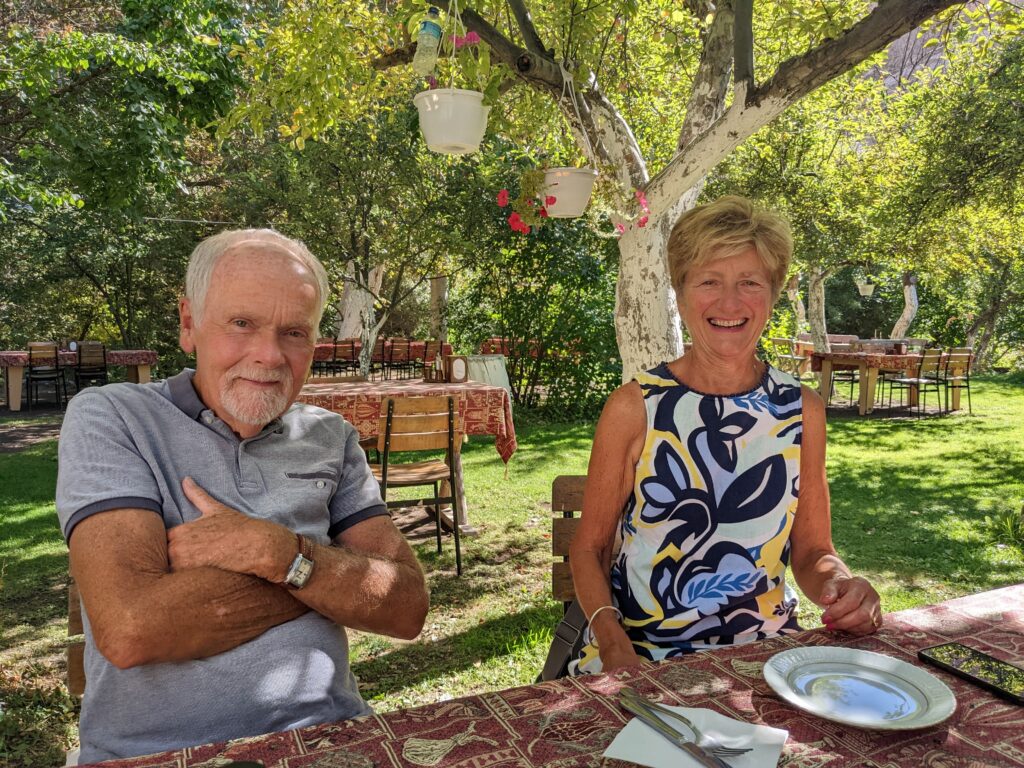
The main reason we’d driven as far as Soğanlı was explore a whole ancient city of cave dwellings. Below you can see Mick welcoming us to his cave church, while I’m demonstrating how the monks used to dine at long (and now very dusty) communal tables carved out of rock.


The return journey to Göreme was largely uneventful, save for a few cows unapologetically flaunting the no overtaking signage.
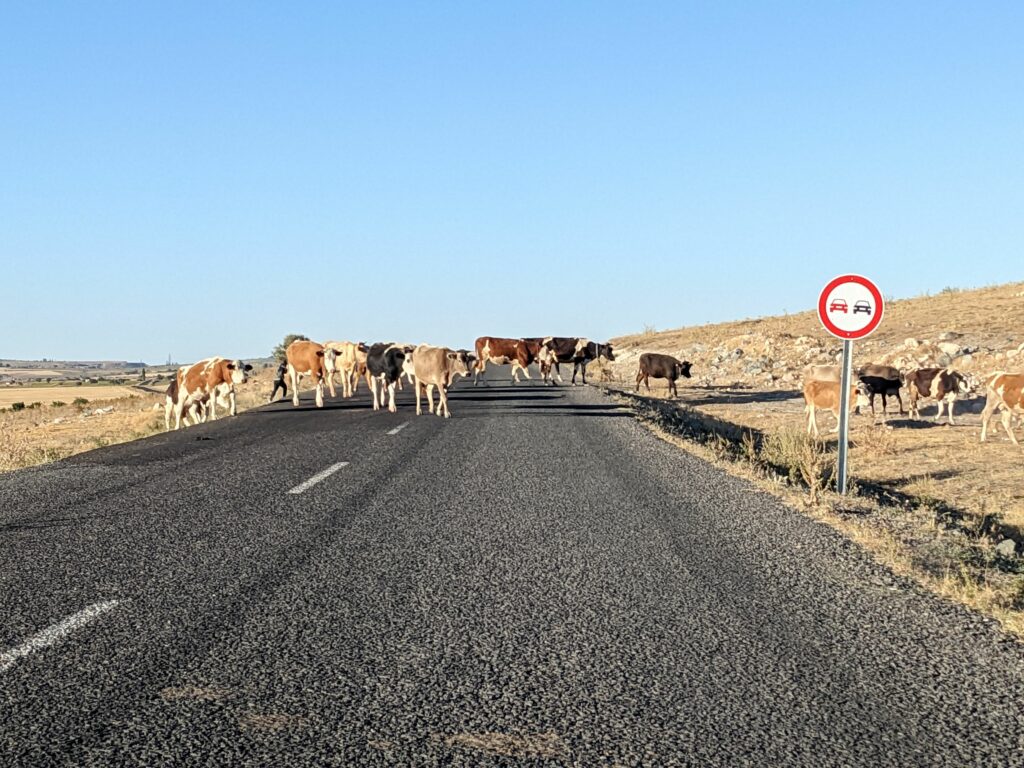
We spent the best part of our second day in Göreme hiking through the Rose Valley. Sadly, Mick wasn’t feeling well, so we stole him some of the breakfast buffet and left him in the peace and quiet of our hotel, while Helen, Sara and I set off on foot into the Rose Valley. It didn’t take long before the landscape had turned lunar in its appearance.
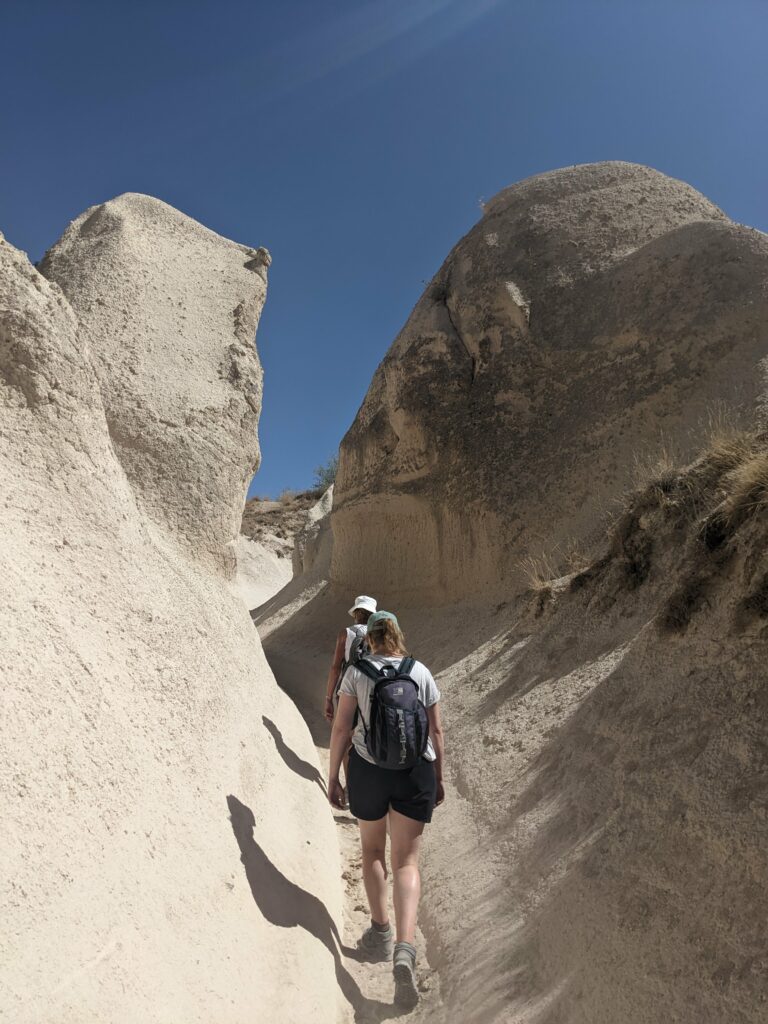
The destination of this hike (besides experiencing the breathtaking landscape up close) was a trio of churches, this time cut out of the inside of some fairy chimneys.
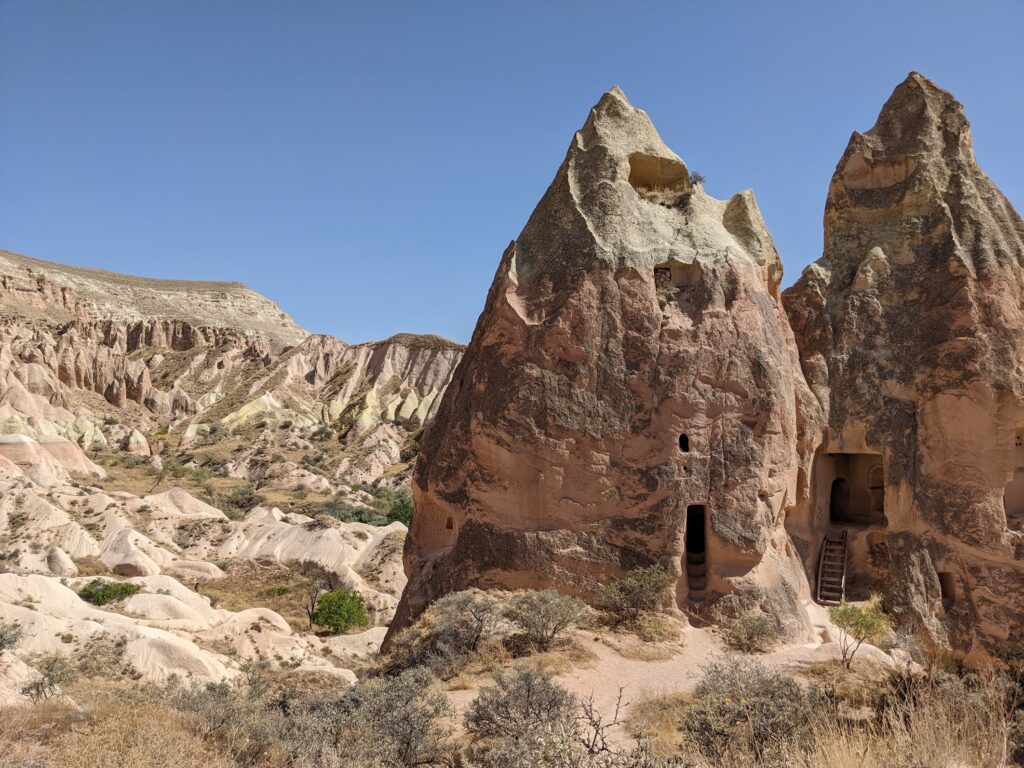
These multi-storey rock-churches had some of the most impressive and colourful frescos we’d seen so far, although again, the faces had been disturbingly scratched off.
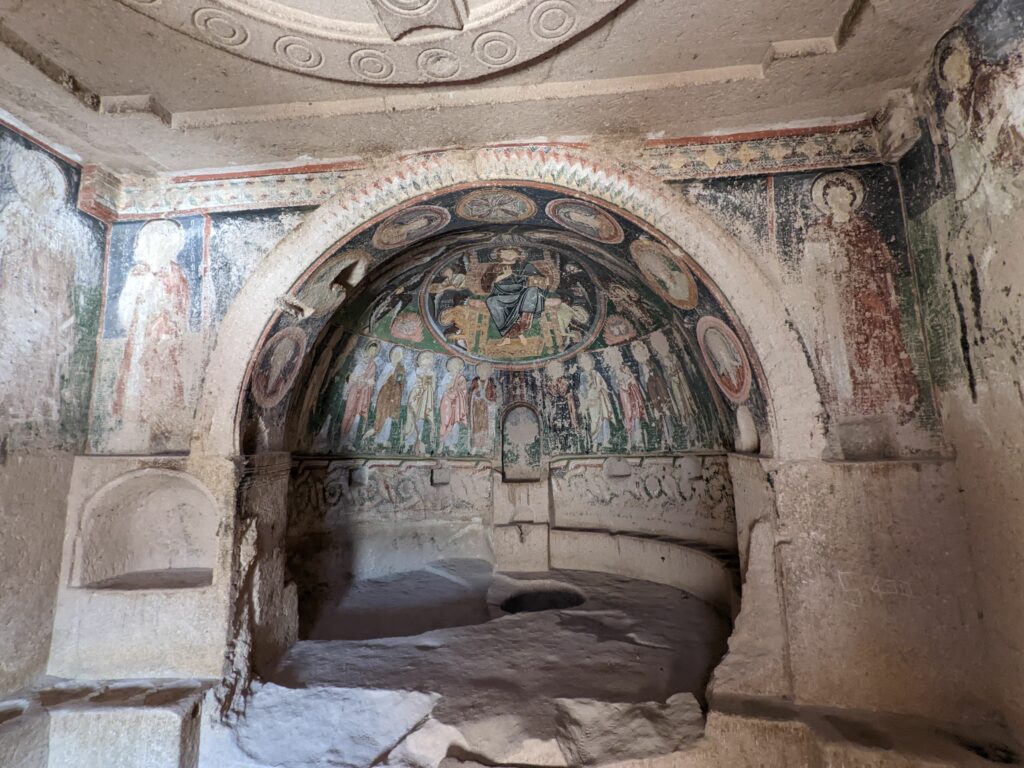
We’d only hiked 5 or so kilometres by this point but we were already struggling in the afternoon heat and relentless sun. But then, as if by some mirage in the desert, a cafe emerged at the top of a rocky climb just as we arrived at the second church. Exhausted and slightly dehydrated, we flopped into seats in the shade of an umbrella, and gladly accepted the offer of some freshly squeezed orange and pomegranate juice. If I didn’t have a photo to prove its existence, I’m not sure I would have trusted my own memory as this seemed such an unlikely refuge in the otherwise barren valley.
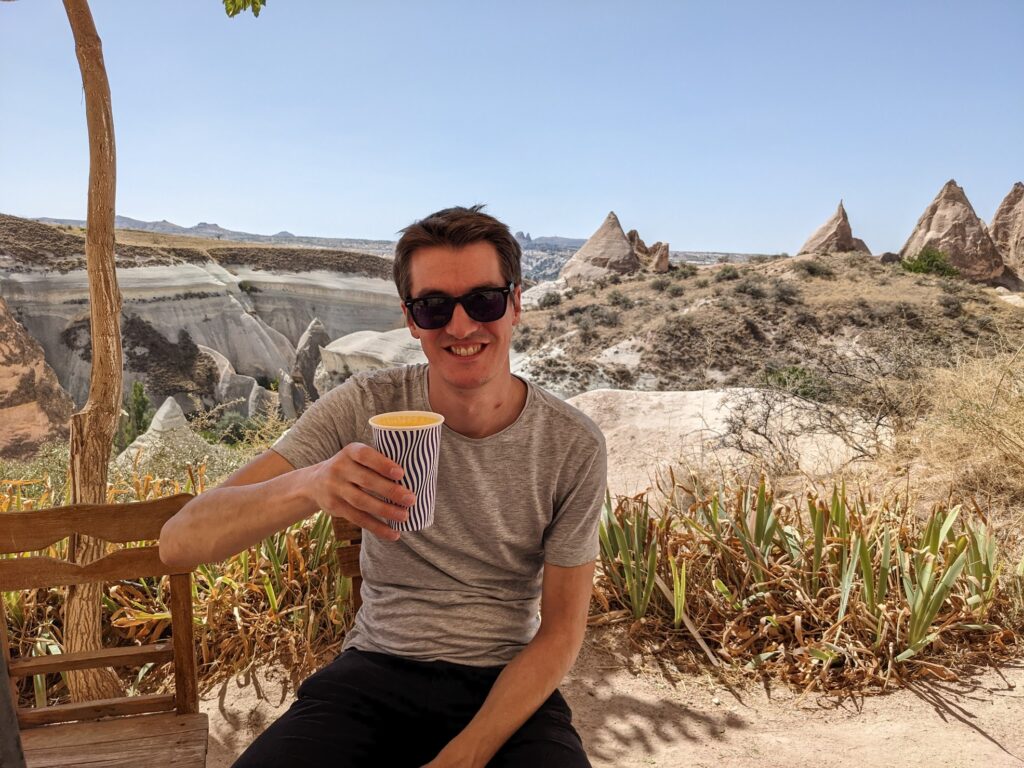
Helen became quite comfortable in the cafe, and was happy to sit tight while Sara and I continued toward the final church. However, we hadn’t gone far before Sara judged the descent too steep and decided to stop. I was determined to continue given how far we’d come, and proceeded to half-abseil, half-scramble down the path to the final church. Anticlimactically, the church was locked shut, and I returned to Sara bathed in sweat and out of breath, but with my need for completeness satisfied.
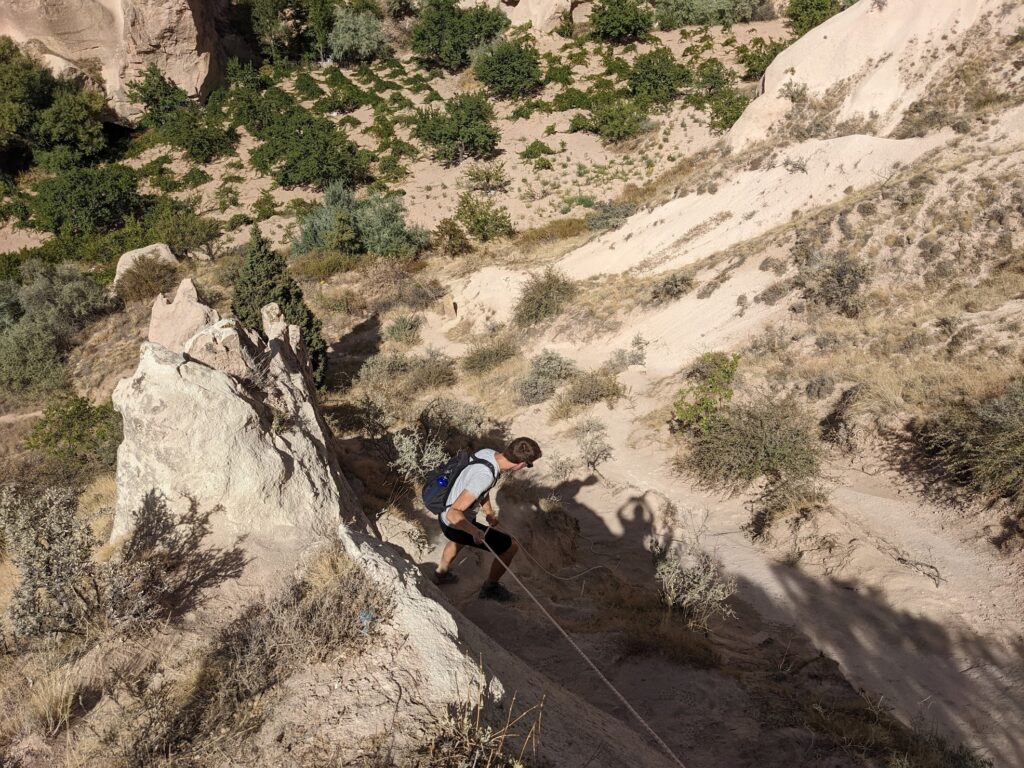
Sara took the following photo while she was waiting and is very proud of her new game of “Where’s W-Oli” (below). I should say that we think WordPress is compressing our images so this is probably virtually impossible!
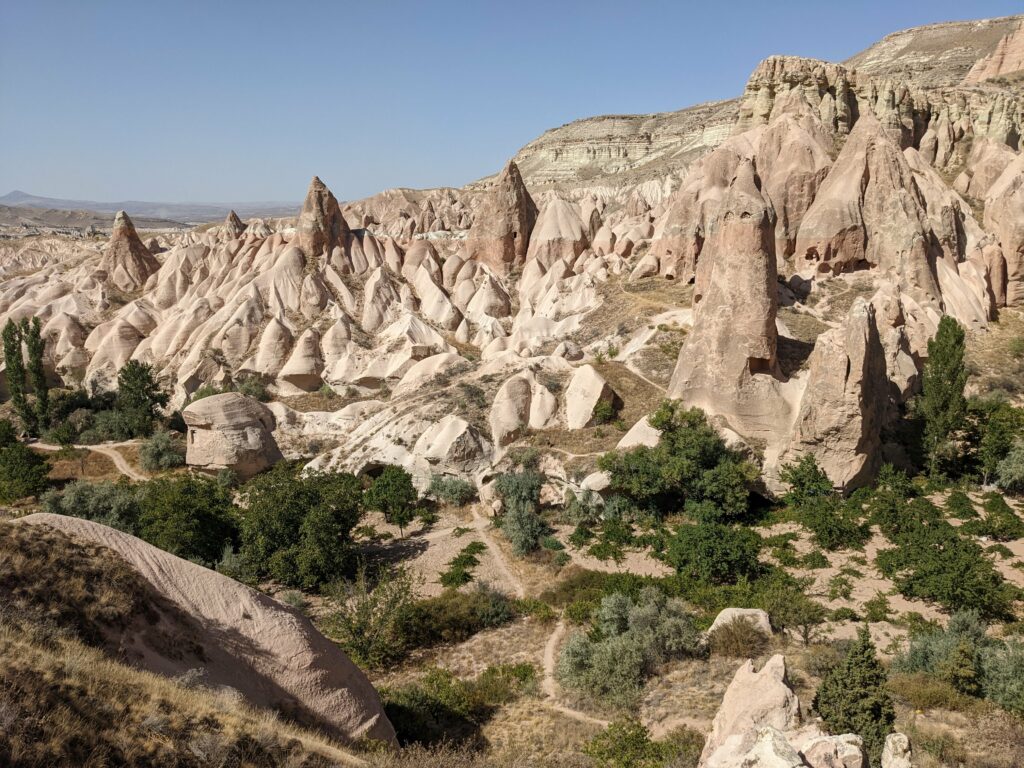
Sadly, this concluded our final day in Cappadocia, so we packed up and headed to the bus station. But then, out of the crowds popped Piotr, an old friend of mine from Hive. He and his girlfriend are on a similar journey east, also avoiding flying wherever possible. Our meeting was brief as their bus was due to depart imminently, but I hope our paths cross again for a little longer next time!
No sooner had I waved goodbye and good luck to Piotr, it was also time to say farewell to Mick & Helen. We parted ways for them to return to Istanbul, while we continued our journey east to Sivas, an important trading post along the silk road. It was lovely to travel with them for an action-packed fortnight through Turkey, and waving them them off from the bus window certainly brought a tear to the eye. We hope to see you both again soon!
